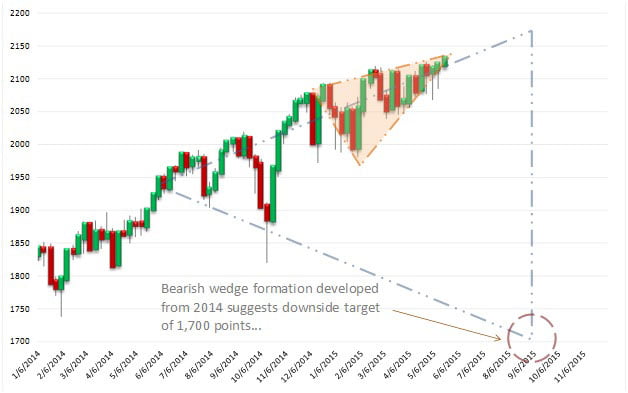Another week is in the bag and it represents another week for the major market indices to prove themselves impervious to fundamental harbingers. Case in point is the S&P 500 (INDEXSP:.INX), which continues to defy sound economic logic by ripping through the stratosphere. Yet even the fiscal narcotics dealer that is the U.S. Federal Reserve will find it challenging — to say the very least! — to overcome the latest batch of setbacks.
Earlier this month, major retailers — catering to all income categories — failed to impress Wall Street, with overall earnings performances disappointing investors. This deficit against expectations underscores an often-cited counterargument against bullish enthusiasm: when it comes to actual economic performance, — ie. people spending money to buy stuff — the data is sorely lacking.
Then, in the middle of last week, the airline industry took a major dump, affecting top tier names along with low-cost leaders such as Southwest Airlines Co. (NYSE:LUV), JetBlue Airways Corp. (NASDAQ:JBLU), and Spirit Airlines Inc. (NASDAQ:SAVE). Further indicting an already tenuous ecosystem, the inability for the transportation sector to rally with the underlying blue-chip indices is a worrying harbinger.
Maintain The Fall Back
What do the technicals say for the major indices? Here too are warning signs that should not be dismissed. Although the markets are settling into their record-breaking range, that ironically is the problem: settling. In previous sessions, the markets have veritably roared, obliterating any bear that dare stands in its way. Currently, the market action is pensive, unsure of whether it wants to maintain the status quo or fall back for a breather.
First, the S&P index is forming a rising wedge pattern, which is defined as trading behavior that becomes tighter and tighter in range until the bulls can no longer maintain the momentum. Almost always, rising wedges have bearish implications. Unless the index can successfully breach and hold the 2,160 point-level, investors will want to remain vigilant.
Even if the markets move forward, it would still have to fight against the larger context of a broadening wedge pattern, which has a more severe implication. Based on traditional technical analysis interpretations, the downside target would be 1,700 points for the S&P index, to be reached at approximately September of this year.
While no one indicator can say for sure where the next move will be, there is enough evidence to warrant caution.
